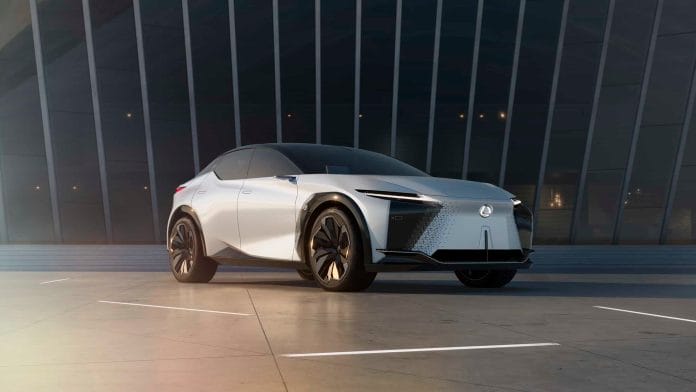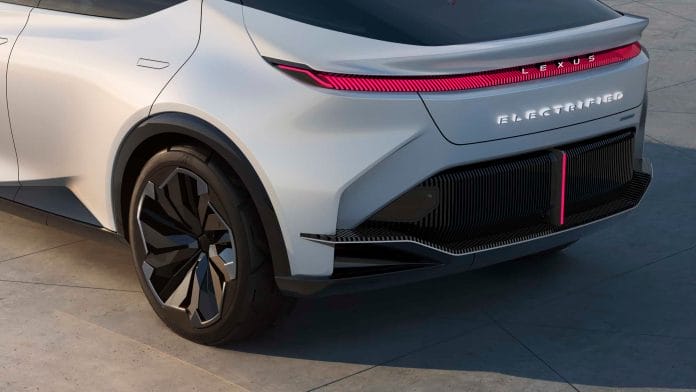This writer was privileged to be the sole journalist from the Philippines to be part of Lexus’s virtual world premiere and press conference held last Monday.
But it wasn’t an ordinary car launch. It was Japan’s premiere luxury car company baring its soul.
Lexus is at the cusp of a global transformation—in body and in spirit. And they gave a rare glimpse of what to expect in this transformation—all the way until the year 2050.
The automotive industry has entered a period of once-in-a-century transformation, while customers’ lifestyles and values are changing at an unprecedented pace.
Since the launch of the RX 400h (the world’s first luxury hybrid model) in 2005, Lexus has sold nearly two million electrified vehicles and currently offers nine models of hybrid electric vehicles (HEVs) and battery electric vehicles (BEVs) in approximately 90 countries around the world.
The groundbreaking Lexus LZ-F Electrified
And now, Lexus has unveiled the LF-Z Electrified, a concept midsize BEV that incorporates Lexus’s brand transformation in terms of driving performance, styling, and technologies envisioned for realization by 2025.

The LF-Z Electrified features Lexus’s new DIRECT4 four-wheel drive technology, which uses the instant responsiveness of an electric motor’s driving force to control a vehicle’s four wheels for superior and highly flexible driving performance that should set it apart from conventional vehicles.
The next generation of the Lexus’s design language—From spindle grille to spindle body
If you think you’re missing the traditional Lexus spindle grille in the LF-Z Electrified, you need to broaden your vision—literally. Whereas the grille alone presented the distinctive spindle design in previous and current Lexus models, the future execution will now include the whole car itself—the grille and the hood of the LF-Z, for instance.

Lexus is evolving the design icon of its spindle grille into a spindle body as the overall body architecture. The aim was to create a three-dimensional design that transforms the form of the vehicle body itself into the icon of the Lexus brand.
In the rear, a clean and simple horizontal design combines with the molding that emphasizes the wheels to express a powerful stance. Also, horizontally displaying “L E X U S” in the continuous slim taillamp contributes to styling that symbolizes the next generation of the brand.
The new “Tazuna” interior design concept
To embody to an even higher degree Lexus’s human-centered approach, which has been the foundation of the Lexus-brand since its birth, the cockpit was designed based on the new concept of “Tazuna” (“tazuna” is Japanese for “rein”).

Inspired by the relationship between horse and rider, who communicate through a single rein, steering wheel-mounted switches and the vehicle’s head-up display have been highly coordinated to create a space in which various functions, such as the navigation system, audio system, and driving mode selection, can be performed while concentrating on driving and without movement of the driver’s line of sight or need to operate complicated switches.
The entire interior has been made a clean and high-quality space by a form that seamlessly connects the cowl to the front doors and on to the rear doors. Also, a panoramic roof uses long plates of glass that bring about a feeling of openness, emphasizing the minimalist environment.
A new “Lexus Driving Signature”
The LF-Z Electrified evolves the “Lexus Driving Signature,” a unique Lexus driving experience that aims for a linear response that is faithful to the driver’s intentions, including the feeling of seamlessly connecting acceleration, steering, and braking in any driving situation.
The LF-Z Electrified achieves an ideal balance by optimally positioning the battery and motors. By orienting the lithium-ion battery assembly longitudinally under the floor of the vehicle, the chassis becomes more rigid and the vehicle’s center of gravity is lowered for improved dynamics. In addition, this design helps mitigate vibrations and unpleasant noises from penetrating the passenger cabin. The Lexus DNA of quietness and ride comfort has evolved dramatically yet remains.

The new four-wheel drive technology, DIRECT4, controls the front and rear drive wheels independently and can switch between front-wheel drive, rear-wheel drive, or all-wheel drive, depending on the driving situation.
The system controls the distribution of driving force through the seamless orchestration and calculation of accelerator pedal and steering wheel inputs, resulting in powerful acceleration (0-100 km/h in 3 seconds) and exhilarating cornering performance that delivers precisely what the driver expects.
The use of steer-by-wire eliminates the need for a mechanical connection through the steering shaft, resulting in a more direct response and enabling the vehicle to turn with less steering angle and more precision.
Artificial Intelligence to enrich the mobility experience
The LF-Z Electrified’s voice recognition system uses the latest AI to recognize, learn, and adapt to a driver’s habits and preferences, supporting with tasks such as determining driving routes and even making restaurant reservations.
A digital key allows family and friends to access the car without having to hand over a conventional key, in addition to operating the vehicle with a smartphone, such as opening and closing the door locks. And by enabling service providers to access the car via the digital key, it will be possible to provide vehicle-linked services such as package delivery to the car and car sharing.
When boarding, the retractable door handle automatically appears above the vehicle’s surface when a driver or passenger approaches with key in hand. The door can be unlocked and opened by touching the sensor inside the handle. Sensors scan the surrounding environment for oncoming and adjacent traffic prior to passenger egress to provide an additional layer of passenger safety.

The panoramic roof uses electrochromic glass and is equipped with entertainment functions such as dimming for privacy and shade, or illumination to reflect the passing night sky. In the center of the roof is a touch panel that connects the front and rear seats and is used for communication between passengers. The reclining rear seats are equipped with a massage function while a next-generation Mark Levinson audio system, working with an active noise cancelation feature, reproduces a quiet, concert hall-like audio experience.
Lexus circa 2025-2050
By 2025, Lexus plans to introduce 20 new or minor-change models, including more than 10 electrified models such as BEVs, plug-in hybrid electric vehicles (PHEVs), and HEVs, in line with the needs of each country and region around the world.
Lexus aims to offer electric variants of all its models by 2025, with the sales ratio of electric vehicles exceeding that of gasoline-engine vehicles.

Lexus also plans to develop vehicles such as sports models that continue to provide the fun of driving, a car that redefines the concept of having a chauffeur, and new genres that have never before existed.
By 2050, Lexus aims to achieve carbon neutrality throughout the lifecycle of its entire model lineup – from the manufacturing of materials, parts and vehicles, to vehicle logistics, to the final disposal and recycling of older vehicles.
And as early as March 2024, Lexus will open a new business and technical center in which members involved in brand development, design, production technology, and planning are to unite in a new, unique open working environment to create the next-generation of cars.

